Breastfeeding and Introducing Solids: Everything You Need to Know
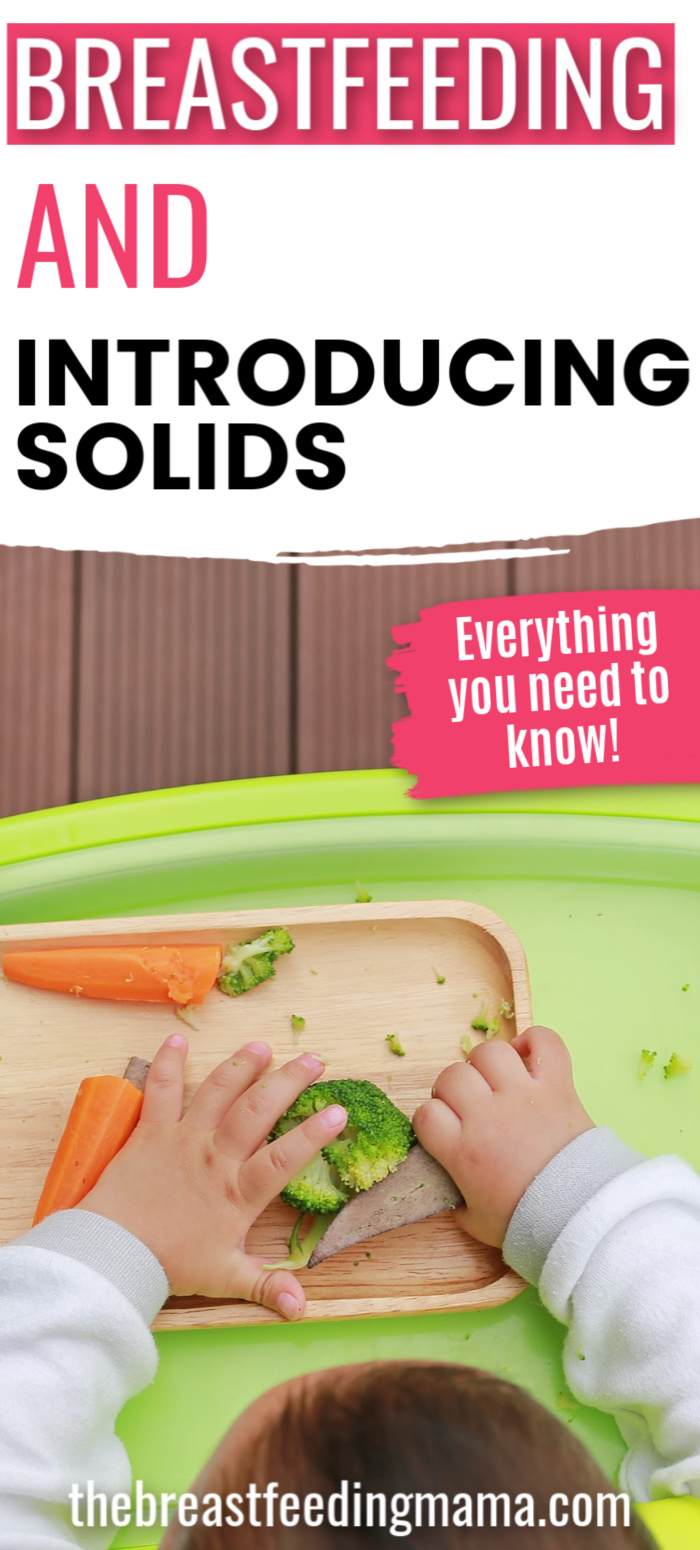
Introducing your babies to solids is an exciting milestone in their life (and yours!) There are many questions surrounding how to introduce solids to breastfed babies especially because you want to ensure your baby is still getting the proper nutrition they need.
In this post, we will go over everything you need to get started. My biggest piece of advice is this – try not to stress! When you try to push a regimented schedule, it can be stressful for everyone involved. Going slowly and having fun introducing your baby to the world of food, while making sure breastmilk is your child’s main source of nutrition, is almost always a recipe for success.
Table of contents
- When to Introduce Solids
- Best Products for Introducing Solids
- Signs your Baby is Ready for Solids
- How to Introduce Solids to Breastfed Babies
- Sample Schedule
- How to Ensure Your Baby is Getting Enough Nutrition
- Spoon Feeding Vs. Baby Led Weaning
- Ideas of First Foods for Baby Led Weaning
- Allergies and Solids
- Poop Changes
When to Introduce Solids
When to introduce your baby to solids is a personal decision. The AAP and WHO both recommend exclusively breastfeeding for the first six months, but some moms and dads wait longer based on their preference.
The recommendations have changed over the years, and you will certainly encounter people who tell you that you need to introduce solid foods at four months. However, that is not what current research supports in MOST situations (see the section on allergies below)
Whenever you begin, you want to ensure that your baby is ready.
Best Products for Introducing Solids
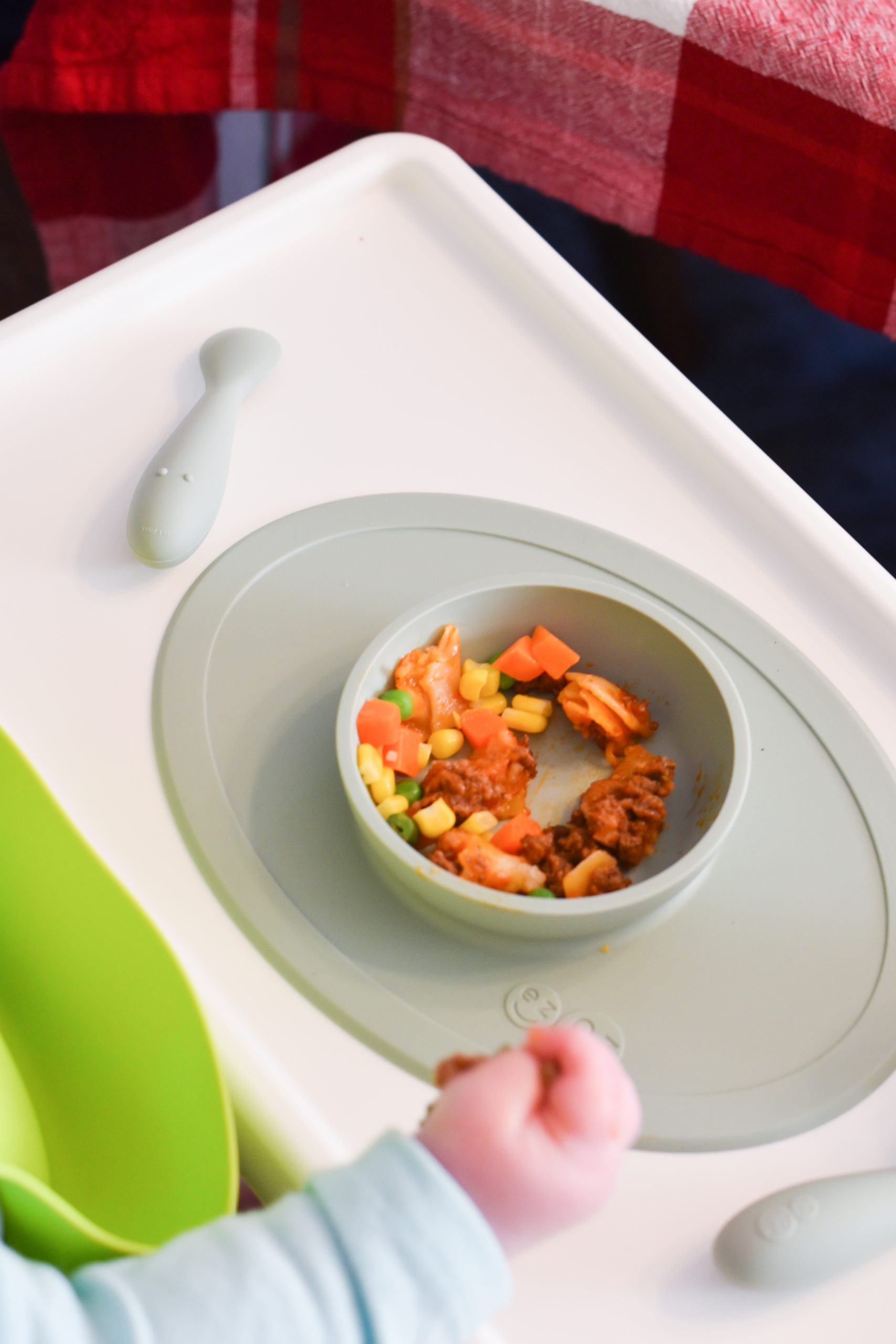
I am very much a minimalist when it comes to baby products for solids. I don’t think you really need fancy blenders, expensive spoons, or high end hair chairs – you just need the basics!
However, there are three products I really do love and find super helpful:
- Silicone Catcher Bibs – these are AMAZING. There are tons of different brands, and I honestly don’t even remember which ones I got. But just get some. They catch almost all the food my son drops as he’s feeding himself, and it hardly ever gets on the floor. And they are SO easy to clean.
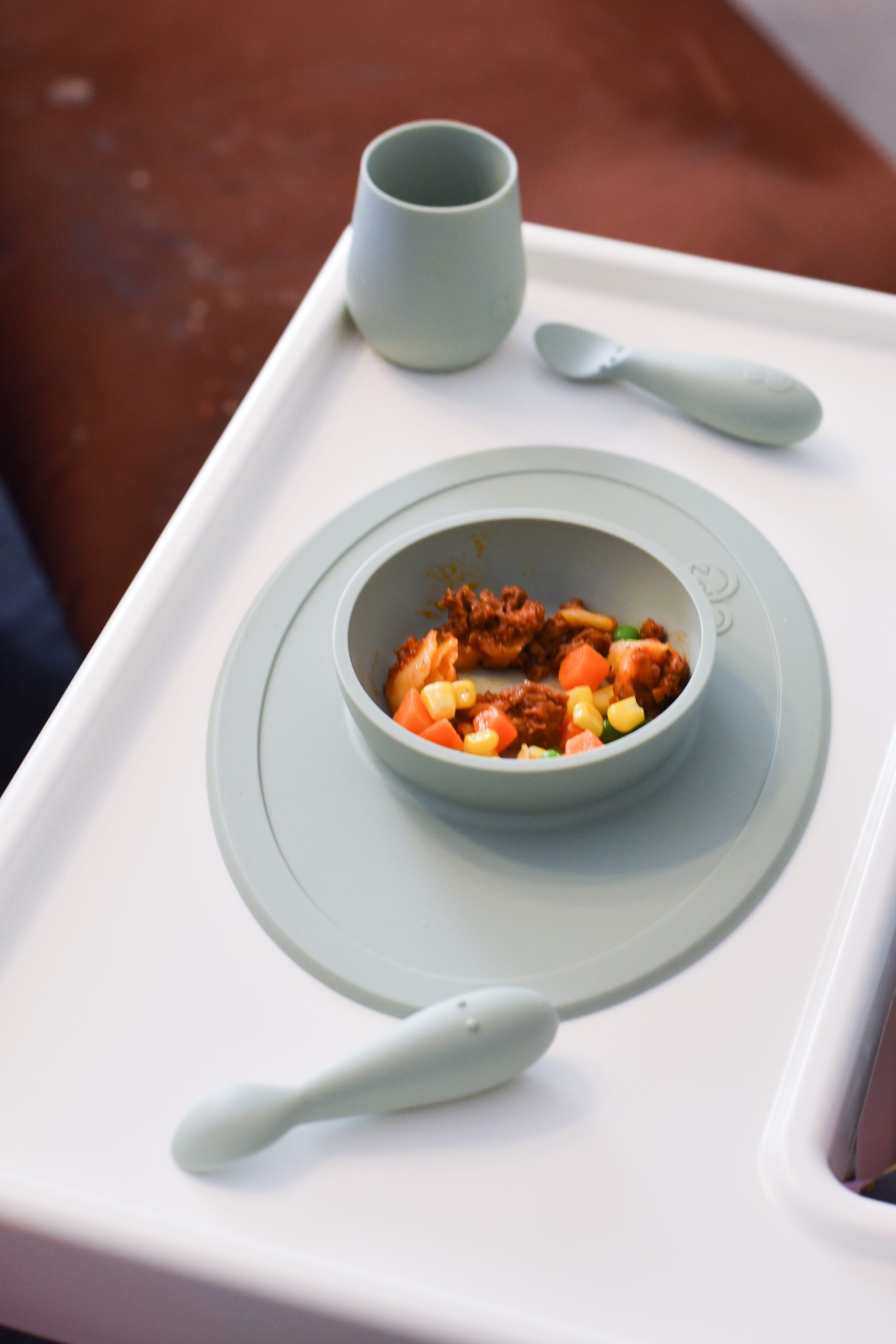
- ezpz Food Mat – I have tried several brands of silicone bowls and plates, and it only took a mater of seconds for my son to fling them on the ground. This was NOT the case with ezpz. I saw them on Shark Tank years ago, and with my third chld, I finally got my hands on this. I LOVE using this for putting food in and my son can’t move it. They have a great baby food introduction set that also cups with a silicone cup, spoon and fork. I’m a big fan of their products for new and developing eaters!
- IKEA High Chair – With my first two children, we had limited space, so we got a space saver high chair that we just put in a regular chair. With my third, I decided to get a free-standing high chair. Everyone recommended the IKEA High Chair – it is SO cheap (just $19.99!). It’s not the greatest quality, but it’s easy to move, super easy to clean, and it’s just very simple. It’s been awesome for my son!
Signs your Baby is Ready for Solids
When deciding to introduce your baby to solids, there are many signs to look for to see if your baby is ready.
Prior to solids, you will want to consider the following:
- Baby is at least six months old.
- Your baby has good head control.
- Sit upright in a high chair unassisted.
- Has lost the tongue-thrust reflex. (This is what helps your baby push the spoon out of their mouth)
- Your baby tracks food when you are eating. Makes noise/ shows excitement with food/ tries to grab food you are eating.
If your baby is waking up in the middle of the night or is developing at a faster rate than the average child ARE NOT signs that your baby is ready for solids.
Many babies wake up throughout the night, and it’s generally not because they aren’t getting enough to eat.
Some babies may meet these milestones earlier or later than other.
How to Introduce Solids to Breastfed Babies
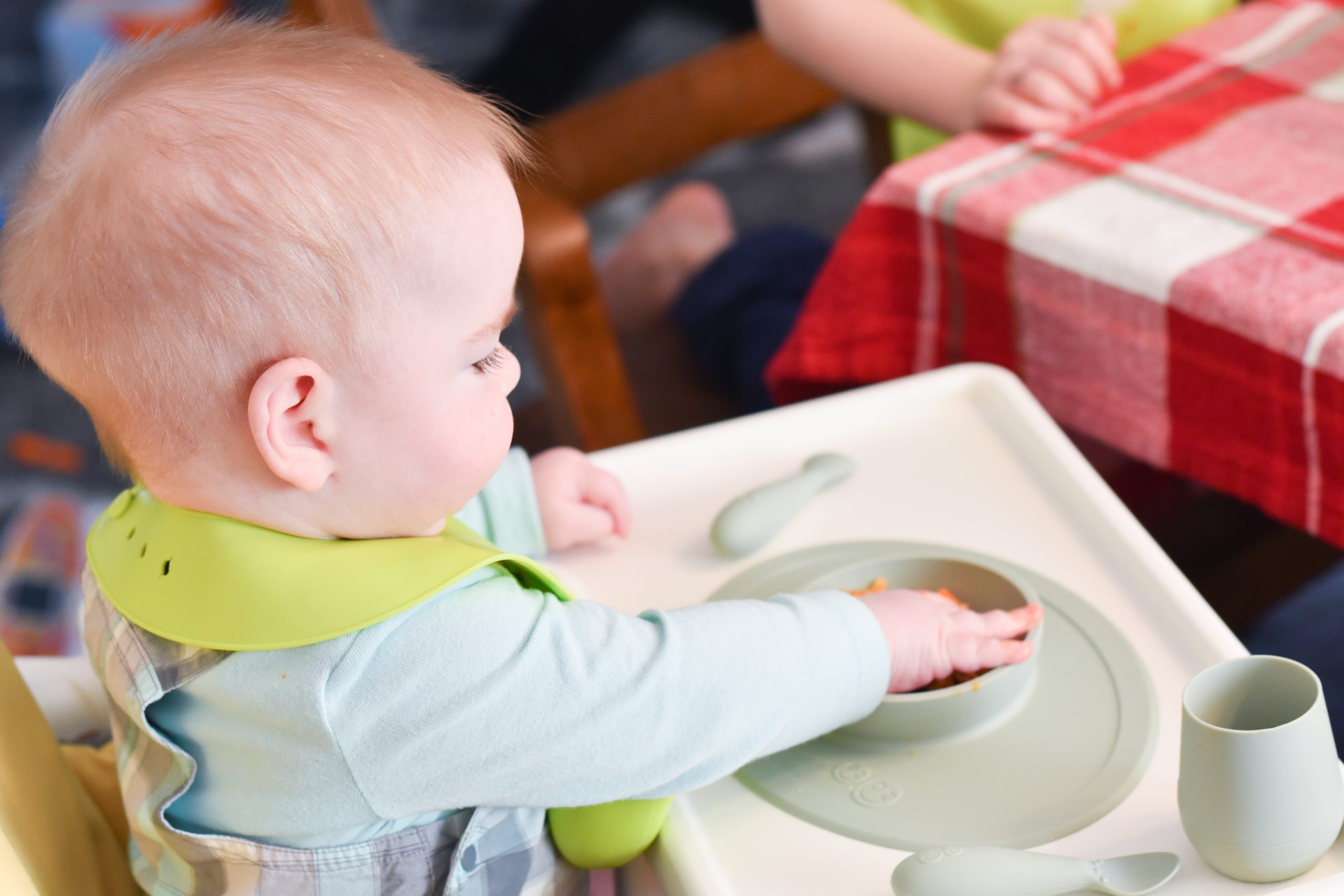
When starting your baby on solids, you want to start slowly. You want to start by introducing your baby to one food at a time once a day. It is recommended by the AAP that you do not offer snacks to your baby until they are at least 9 months old.
Snacking fills your baby’s stomach and prevents them from getting as much nutrition as they need from breastmilk.
When you begin introducing solids to your baby, it is important to remember that the purpose of solids is to teach your baby to eat and introduce them to different textures and flavors, it is not to replace the nutrition in breastmilk.
You should introduce your baby to one food at a time. As you try new foods, you should track if your baby has a reaction to it such as diarrhea, vomiting, or weird rashes. If you don’t see any initial reactions continue to feed them the same food for at least 3 days. This ensures no reactions pop up later.
If you start giving your baby a variety of foods all at once and they have a reaction it is much harder to figure out which food caused the reaction. Just because your baby has a reaction when they are little, does not mean they will for their whole life. Talk to your Pediatrician about any reactions that you see.
You want to offer your baby a variety of different types of healthy foods. Even if the first time they don’t like it, try it again at a later point so they can develop a taste for it.
Breastfeeding and Solids Schedule
I generally don’t recommend a strict schedule with solids. It’s important to make sure you are not replacing any breastfeeding sessions with solids, especially in the beginning.
Many mothers will offer breast milk first and then solids about 15-30 minutes later. I generally just offer solids when we are eating – sometimes my kids would eat three meals a day, other times one.
In the beginning, your child may not be interested at all or will only eat a little bit.
That’s totally fine. At six months, I would suggest just offering something once a day and going from there.
Here is a sample schedule for a baby between about 8-9 months. Your baby may want to breastfeed more frequently than this, and that’s okay. Heaven knows my son does!
8:00 AM – Breastfeed
8:30 AM – Offer a small meal – I like to do apple sauce mixed with peanut butter or oatmeal and peanut butter (if there is a concern about allergies, make sure you work with your pediatrician)
11:00 breastfeed until your baby is full.
11:30 Prepare solid foods and offer to baby
11:40 When your baby is done eating solids, you can offer breastmilk again if desired.
2:00 Breastfeed
5:00 Breastfeed
5:30 Solids
7:30 Breastfeed and Bed
I generally recommend not offering solids too soon before bed, just in case something bothers their tummy.
How to Ensure Your Baby is Getting Enough Nutrition
One of the main concerns when starting solids is ensuring that your baby is getting the proper nutrition.
To ensure that your baby is getting the proper nutrition, you want to make sure you are always breastfeeding before each solid feeding. Breastfeeding should be your baby’s main nutrition until one year old.
Spoon Feeding Vs. Baby Led Weaning
Spoon feeding and Baby Led Weaning both have their own benefits and disadvantages.
Baby Led Weaning allows your baby to explore and experiment with different foods causing them to learn how to handle new flavors and textures whereas spoon feeding is only teaching them how to eat one textured food.
Spoon feeding is easier, less messy, and takes less time than Baby Led Weaning.
Baby Led Weaning can get really messy but allows your baby to control how much he or she wants to eat which helps prevent your baby from over eating.
I honestly do a “hybrid” method. I love to let my children explore and self-feed themselves, and they are always given what we are eating at main meal times. But sometimes it is easier and more convenient to offer something with a spoon! There’s no wrong answer.
Regardless of which method you choose, it is important that you closely monitor your baby as they are eating.
This is a great article that discusses introducing solids – particularly with an emphasis on nutrient rich foods. It is extremely long but well-researched.
Benefits of Spoon Feeding
Spoon feeding vegetables and fruits is a very simple way to feed your baby. It is as simple as buying jars and pouches to always have on hand for your baby when they are hungry.
Spoon feeding is very convenient and easy to throw in the diaper bag for your nights out or visiting family and friends.
Spoon feeding also allows you to easily track how much your baby is eating because you are feeding them.
Benefits of Baby Led Weaning
One of the main benefits of Baby Led Weaning is it helps reduce picky eating behaviors. Not only that, but it helps develop age-appropriate oral motor control.
It is important to expose your baby to a wide variety of flavors and textures and with Baby Led weaning it does just that.
One of the biggest benefits of Baby Led Weaning is that you can actually all sit down and eat together as a family and no one is having to take time to spoon fed the baby.
With Baby Led Weaning your baby usually eats foods that the family is eating.
Also, another plus is you are spending less time preparing foods for dinner as your baby just eats what you are cooking.
Ideas of First Foods for Baby Led Weaning
When starting Baby Led Weaning you want to start with soft easy to mash foods. You want to make sure the pieces are big enough for your child to be able to grip easily. Some great options are bananas, steamed vegetables such as sweet potatoes, squash, pasta, and avocados.
In the past, people would often recommend rice cereal as a first food. While cereal can be a good source of iron, it’s largely empty calories, and it’s better to introduce nutrient rich fruits, veggies, and even softly cooked meat first!
Don’t be afraid to introduce your baby new flavors with seasonings as well. Around six months is an excellent time to use seasonings. There is some debate on salt, but this is a great article that dives into the subject of salt and babies.
You will find that keeping a Baby Led Weaning planner/journal of your child’s reactions to new foods will help you remember what they liked and did not like.
Allergies and Solids
It can be a little nerve-wracking when you start to introduce solids to your baby for the first time. Some children do have allergies, and it is something to consider.
If your baby is at high risk for allergies, current research supports introducing higher allergen foods earlier rather than later. It used to be recommended to wait until after a year to introduce foods like eggs and peanuts, but now they are finding it is better to introduce them sooner. Introducing small amounts of an allergen between 4-6 months may be appropriate. Here is a great article that shows an overview of these recommendations.
Always be in contact with your doctor if allergies are a concern. Even if you aren’t concerned, just watch your baby carefully when you introduce something new. It’s generally recommended to wait a few days in between introducing a new type of food (though if I’m being honest, we only do that with foods that have a higher chance of our kids reacting to).
Poop Changes with Solids
If your baby has been on a breastfed diet only, you are used to them having pretty soft, low odor bowel movements. The frequency may be multiple times a day or every few days – both are normal!
With the introduction of solids, pooping takes a dramatic change. Some babies will have a much fouler smelling stool, and it may become more formed. Other babies may still have a pretty loose stool.
With my kids, it goes back and forth. Sometimes it’s still pretty liquidy, while other times they are passing logs. A lot of it depends on what they ate. With my third baby, sometimes the bowel movement was really stinky, and when that happened, he was almost always fussier.
Breastfed baby constipated after starting solids
Most of the time, looser stools aren’t a huge concern as long as baby is growing well and happy. However, constipation becomes more of a concern once you’ve introduced solids.
While breastfed babies can go multiple days without pooping, and it be completely normal, if you find your baby is straining, extra fussy, and passing really hard looking stool, they might be struggling with constipation.
If this happens, I would suggest backing off the solids for a while and only offering foods that aren’t constipating. Bananas are extremely constipating.
The Windi by Frida Baby is extremely popular and yields great results. Tummy massage can also help with constipation.
In the past, people would suggest using prune juice or Karo syrup, but these aren’t common practices anymore.
What if My Baby Isn’t Interested?
All babies develop differently. Some will be very eager to try solid foods at six months, while others will turn their noses up to it.
If your chlid doesn’t seem interested in eating solid foods yet, there’s nothing wrong with taking a break and starting again a few days or weeks later. This is a big reason why I love Baby Led Weaning, as it helps you to listen to your baby.
Introducing solids IS important – not necessarily nutritionally but for the skills it helps develop. Some babies respond better to Baby Led Weaning and others to spoon feeding. Don’t be afraid to experiment. Putting your baby in their high chair and just letting them play with the food can be really helpful!
After a year, you really do want your child to be regularly eating solids. If you find they don’t want anything at all, you can always reach out to your medical professional to ask their advice on what you should do.
I highly recommend this eCourse – it’s all about solving picky eating and encouraging intuitive eating.
Final Thoughts on Introducing Solids
Introducing solids to your baby is an exciting time. It symbolizes your baby is growing up and becoming more independent. Regardless of the method, you choose to introduce solids (spoon fed or Baby Led Weaning) the most important thing to remember is that breastmilk is still best for baby.

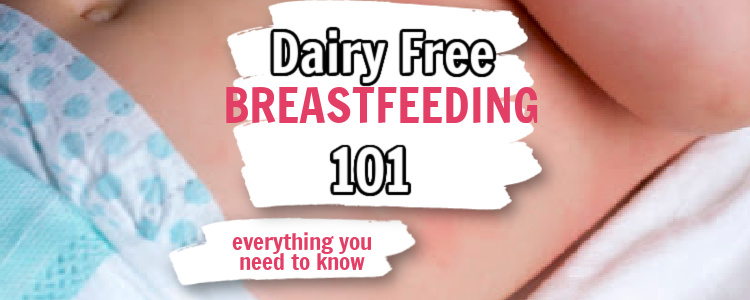
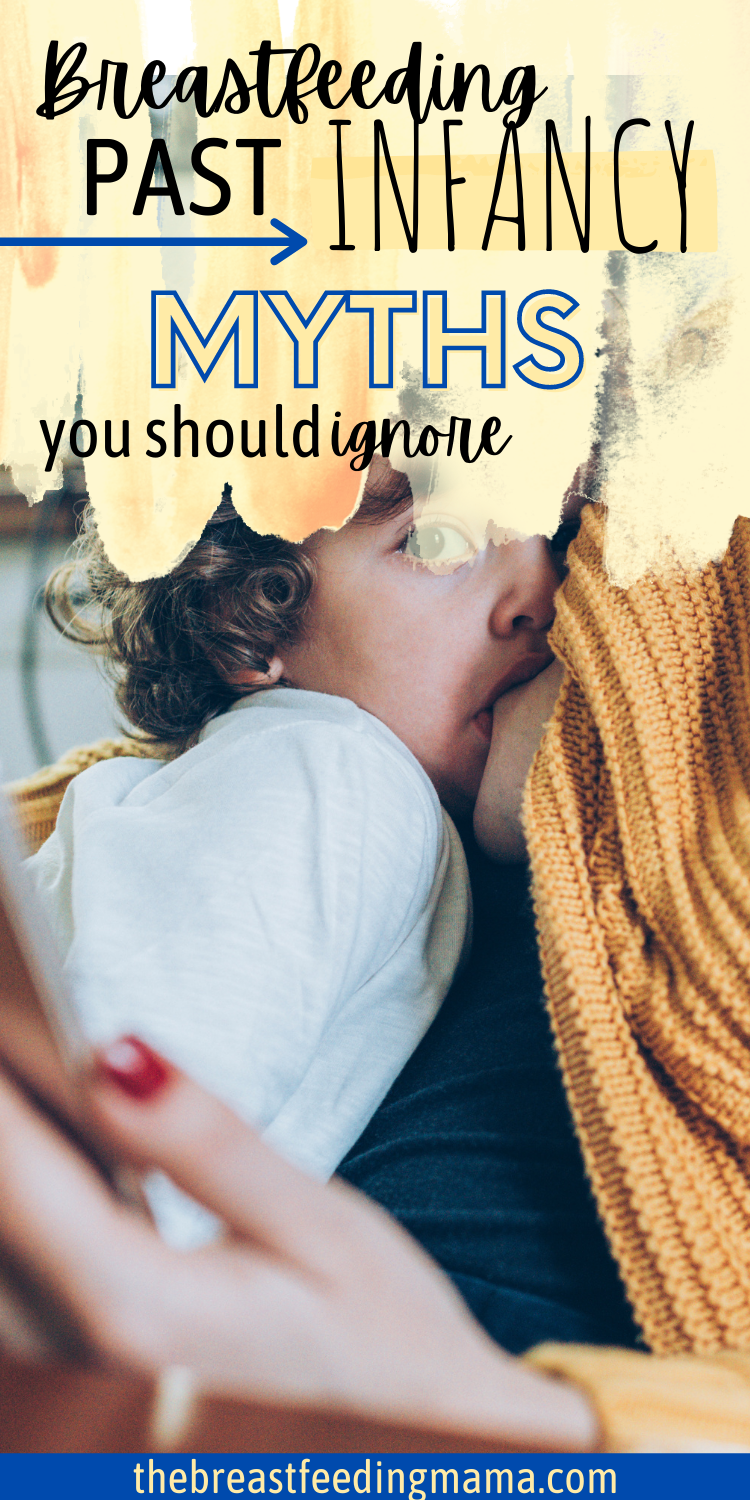
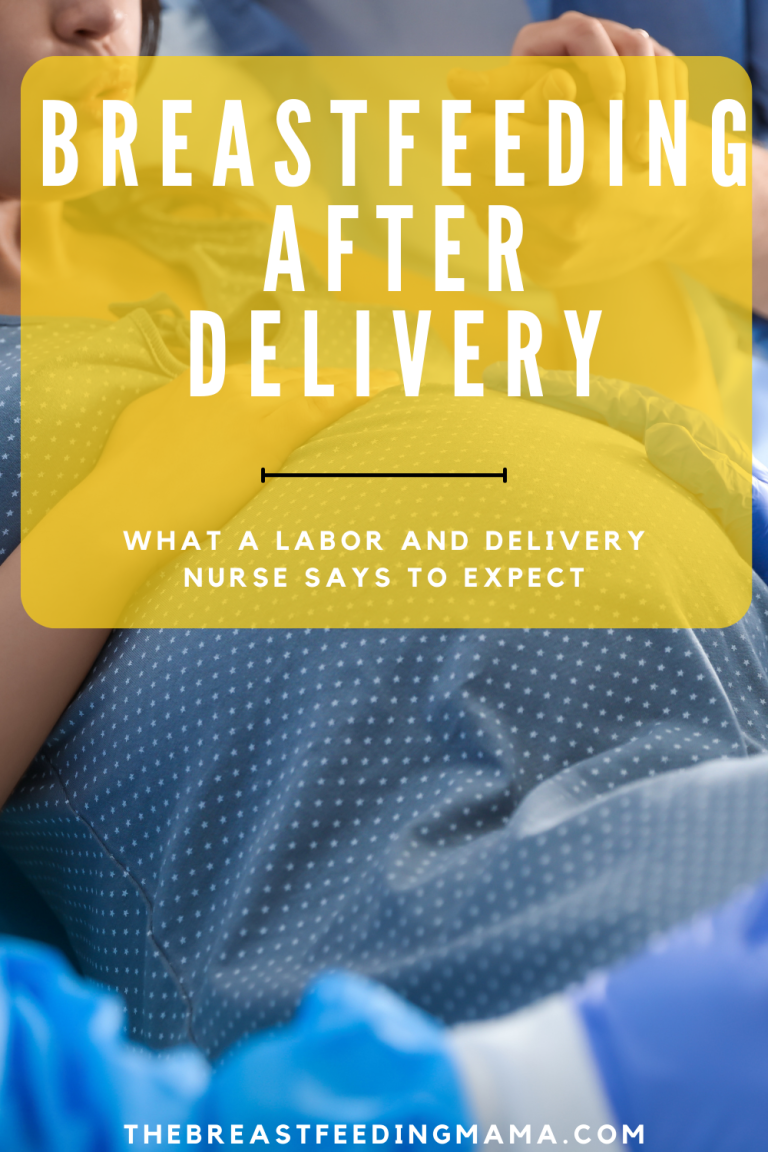
3 Comments